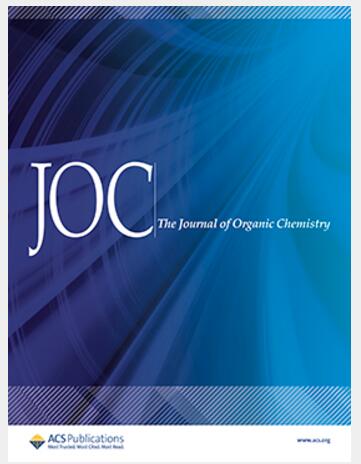去乙酰氨基秋水仙碱B环的解构揭示了具有微管蛋白结合特性的3类atroisomer AC环。
IF 3.6
2区 化学
Q1 CHEMISTRY, ORGANIC
引用次数: 0
摘要
秋水仙碱是已知的最古老的微管靶向药物之一,也是医学上轴向手性和收缩异构的典型例子。这是因为秋水仙碱的轴向手性甲氧基tropo -三甲氧基苯(称为AC环)直接负责微管蛋白结合,并通过B环上的点手性乙酰氨基在热力学上被设定为必需的aR形式。事实上,去乙酰氨基秋水仙碱(DAAC),一种没有乙酰氨基的秋水仙碱类似物,在几分钟内就会外消旋。在此,我们描述了一系列AC环分子的合成以及物理和生物学特性,这些分子代表了DAAC的b环进一步解构变体。这些研究揭示了一种具有交流环的新型类似物,它对外异构化具有高度稳定性,而不是基于热力学稳定性,而是基于高旋转势垒能。利用振动圆二色性对新分子的基态二面角进行了计算和实验表征,结果表明新分子的基态二面角与秋水仙碱分子的基态二面角有显著差异。然而,尽管存在这种差异,该分子保留了抗增殖、微管蛋白结合和微管蛋白聚合抑制活性。本文章由计算机程序翻译,如有差异,请以英文原文为准。
Deconstruction of Desacetamidocolchicine's B Ring Reveals a Class 3 Atropisomeric AC Ring with Tubulin Binding Properties.
Colchicine is one of the oldest known microtubule-targeting agents and also represents a classic example of axial chirality and atropisomerism in medicine. This is because colchicine's axially chiral methoxytropone-trimethoxybenzene (called the AC ring) is directly responsible for tubulin binding and is thermodynamically set into the requisite aR form by a point chiral acetamido group on its B ring. Indeed, desacetamidocolchicine (DAAC), a colchicine analogue without the acetamido group, racemizes within minutes. Herein, we describe the synthesis as well as physical and biological characterization of a series of AC ring-containing molecules that represent B-ring further deconstructed variants of DAAC. These studies revealed a novel analogue with an AC ring that is highly stable to epimerization based not on thermodynamic stabilization but rather a high rotational barrier energy. Profiling and characterization of the dihedral angles were carried out computationally and experimentally using vibrational circular dichroism, demonstrating that the ground state dihedral angles of the new molecules differ significantly from those of colchicine. However, despite this difference, the molecule retained antiproliferative, tubulin-binding, and tubulin polymerization inhibitory activity.
求助全文
通过发布文献求助,成功后即可免费获取论文全文。
去求助
来源期刊

Journal of Organic Chemistry
化学-有机化学
CiteScore
6.20
自引率
11.10%
发文量
1467
审稿时长
2 months
期刊介绍:
Journal of Organic Chemistry welcomes original contributions of fundamental research in all branches of the theory and practice of organic chemistry. In selecting manuscripts for publication, the editors place emphasis on the quality and novelty of the work, as well as the breadth of interest to the organic chemistry community.
 求助内容:
求助内容: 应助结果提醒方式:
应助结果提醒方式:


